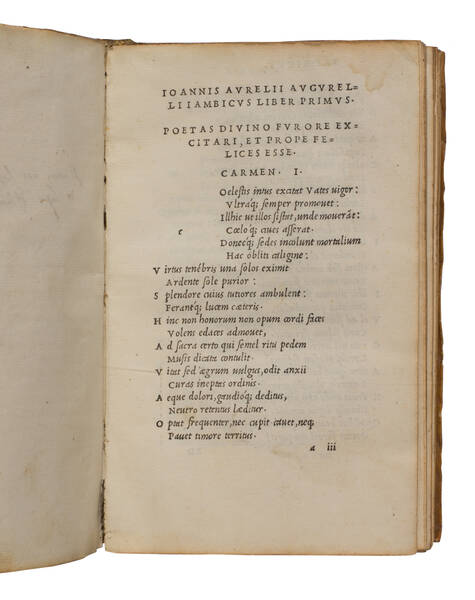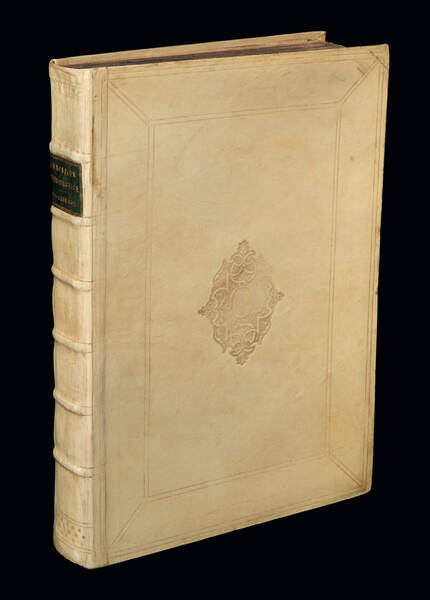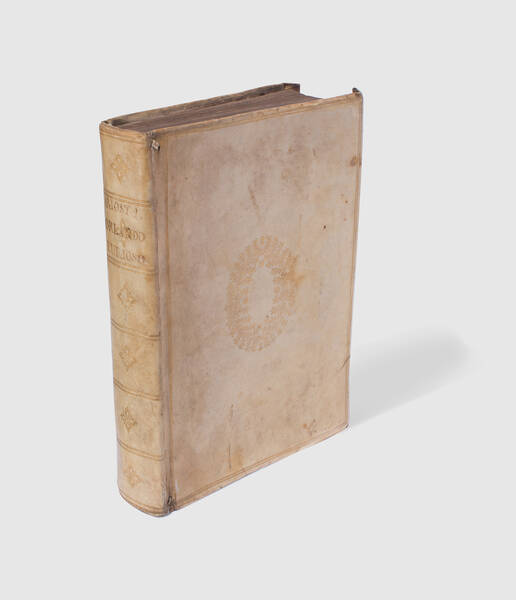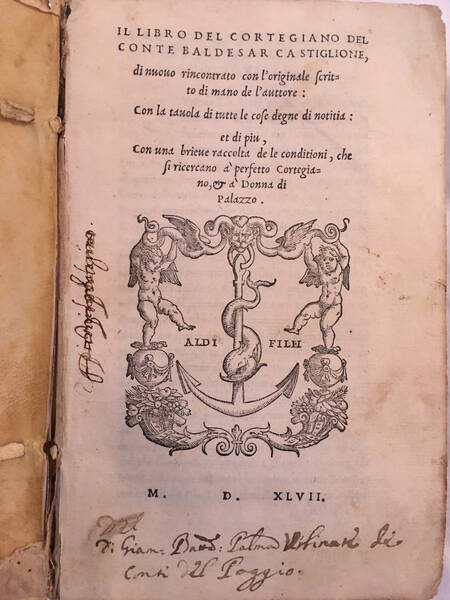CICERO, Marcus Tullius. De Philosophia (1552) - Officiorum Libri tres (1552) - Rhetoricorum Ad C. Herennium (1550) - Epistolae ad Atticum (1551) - Epistolae Familiares (1552). 5 volumes.
Venice, apud Aldi filios., 1550-1552.Octavo (159 x 99 mm.) five volumes, (I): [4], 147, [9], [3], 213, [16] leaves with printer's device on title page and at the end of each of the two parts; (II): 125, [3], [1] leaves 148-251, [16] with printer's device on title page and at the end of each of the two parts; (III): 179, [1], 136, [1], 56, 45, [3] leaves, with printer's device on title page and at the end of each of the four parts; (IV): [2], 333, [13] leaves with printer's device on title page and at the end; (V): 267, [5], [40] leaves with printer's device on title page and at the end of each of the two parts. A very fine set bound in early eighteenth-century French red morocco, three gilt fillets around sides, gilt arms of Jean Jacques Charron de Ménars, spine in compartments richly gilt, gilt edges.
A splendid set of Cicero's works printed by Paulus Manutius (1512-1574), a second reprint from the original volumes published in 1545-1548, corrected and rare to find collectively. Our set has a very interesting provenance coming
from the library of the famous French bibliophile Jean Jacques Charron de Ménars (1643-1718), Colbert's brother-in-law. In 1679, he acquired the de Thou collection, which he sold in 1706 to Cardinal de Rohan, with great profit. This famous collection thus passed into that of the Princes de Soubise. The rest of his library was sold in The Hague after his death.
Marcus Tullius Cicero (106-43BCE) was a Roman statesman, orator, philosopher, and writer who significantly influenced Western thought. Excelling in rhetoric and law, Cicero quickly became a prominent public figure as a consul. His life was markedly tumultuous amidst assassination attempts, civil war and the rapid decline of the Roman Republic. However, his extensive writings, ranging from philosophical treatises to speeches and over 900 letters, offer exceptionally valuable insights into Roman politics and culture at such a turbulent moment in history.
The first volume in this set, divided in two parts, focuses on Cicero's philosophical essays, containing Academica, De Finibus Bonorum et Malorum, De Natura Deorum, De Divinatione, De Fato, De Legibus, De universitates, and De Petitione Consulatus ad Marcum Fratrem. The second volume covers other philosophical treatises concerning moral obligations and societal norms such as De officiis, Cato Maior, Vel de Senectute, Laelius de Amicitia, Paradoxa Stoicorum, and Somnium Scipionis (the sixth book in De re publica); in this set the Tusculanae Quaestiones are bound in this volume after the Somnium Scipionis.
The third book is a collection of works on rhetoric and oratory, comprising Rhetorica ad C. Herennium (attributed to an unknown author), De Inventione, De oratore, Brutus, Orator ad Brutum, Topica ad Trebatium, and Oratoriae partitiones. Rhetorica became one of the most well-known works during the Middle Ages, serving as a standard for the teaching of rhetoric throughout Europe, copied extensively and translated from Latin into vernacular languages. Focused on practical applications, it was the first work to present rhetoric in a structured and disciplined manner, offering systematic guidance on elocutio and the earliest treatment of Latin rhetorical style. His works on rhetoric continued to be frequently used as guides and schoolbooks well beyond the Renaissance.
The fourth and fifth volumes cover Cicero's correspondence to family, friends and important political figures: Epistolae ad Atticum (Titus Pomponius Atticus), ad M. Brutum (Marcus Junius Brutus), ad Quintum fratrem (Quintus Tullius Cicero), and Epistolae familiars, which includes letters to and from Terentia (Cicero's wife) and Julius Caesar, among others. The last volume also contains Paulus Manutius' notes and corrections of several passages and translations. Compiled over the years, Cicero's collection of letters offers a wealth of information, not only regarding Cicero's life, and is instrumental in developing understanding of the period leading up to the fall of the Roman Republic. A manuscript containing the letters to Brutus and Quintus was rediscovered by Petrarca in 1345, in the Biblioteca Capitolare of Verona, marking a renewed interest in Cicero's work and its dissemination among scholars, ushering in the Renaissance.
(1) USTC 82238; EDIT16 CNCE12309; Ahmanson-Murphy 431, p.264; Renouard p.154, 7; Adams C1757; BM STC Italian p.176; Graesse p.171. (2) USTC 822351; EDIT16 CNCE 12313; Ahmanson-Murphy 423, p.260; Renouard p.154 8; Adams C1756; BM STC Italian p.176. (3) USTC 822339; EDIT16 CNCE 12301; Ahmanson Murphy 291 p.245; Renouard p.148 5; Adams C1682; BM STC Italian p.176; Graesse p.169. (4) USTC 822342; EDIT16 CNCE 12303; Ahmanson-Murphy 408 p.252; Renouard p.152, 11; Adams C1919; BM STC Italian p.177. USTC records only 1 copy in the US and in the UK. (5) USTC 822349; EDIT16 CNCE 12310; Ahmanson-Murphy 429 p.263; Renouard p.153, 5; Adams C1954; Not in BM STC Italian; Graesse p.168. No copies recorded in the United States.
Other Books
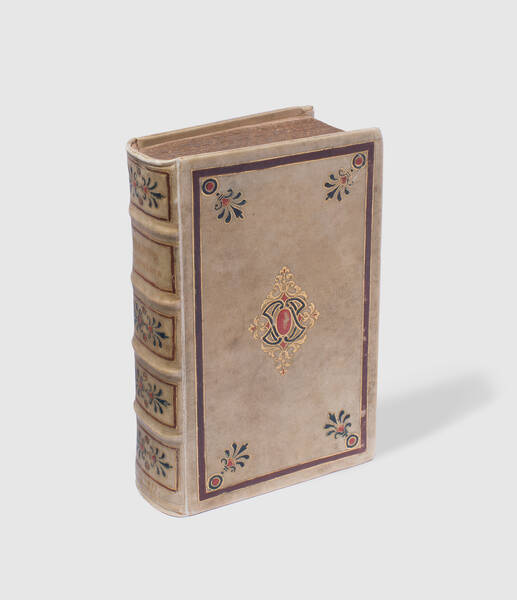
ALIGHIERI, Dante
Commedia di Dante insieme con vno dialogo circa el sito forma et misure dello Inferno.
SOLD OUT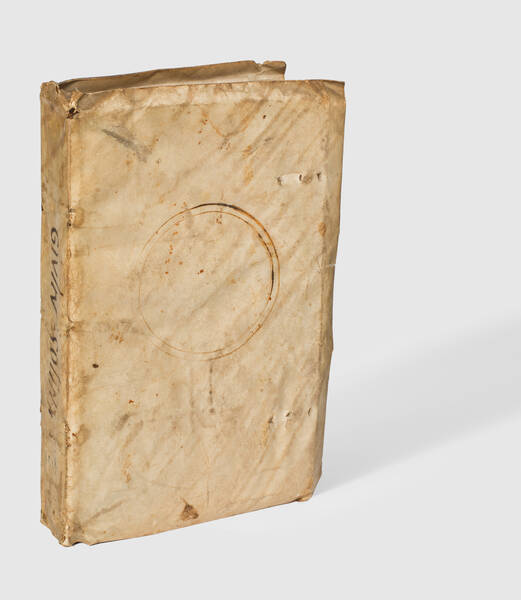
POMPONIUS MELA, IULIUS SOLINUS
Itinerarium Antonini Aug. Vibius Sequester. P. Victor de regionibus urbis Romae. Dionysius Afer de Situ orbis Prisciano interprete
SOLD OUT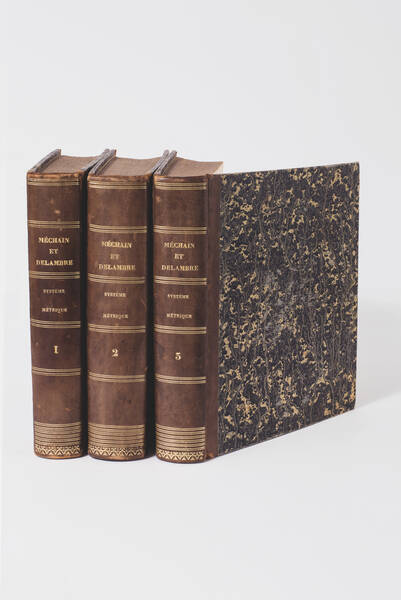
DELAMBRE, Jean-Baptiste-Joseph & MÉCHAIN, Pierre-François-André
Base du système métrique décimal, ou mesure de l'arc du méridien compris entre les parallèles de Dunkerque et Barcelone, exécutée en 1792 et années...
SOLD OUT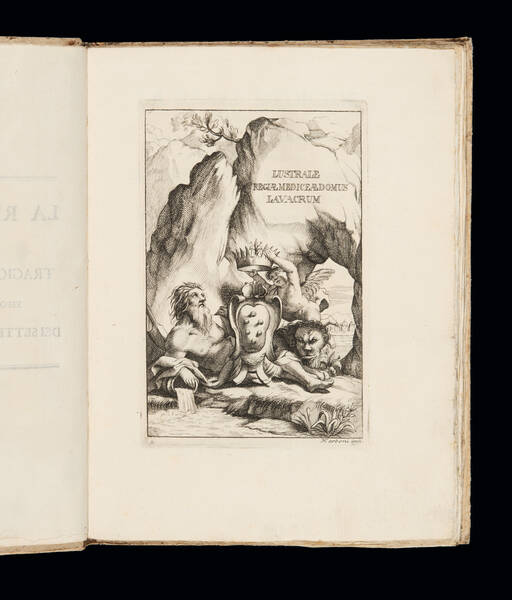
CATANI, Francesco Saverino
La reale medicide, esponente nella morte di Don Garzia i fatti più speciali di Cosimo Duca II. di Firenze ... Tragica festa teatrale, illustrata di...
€ 3.000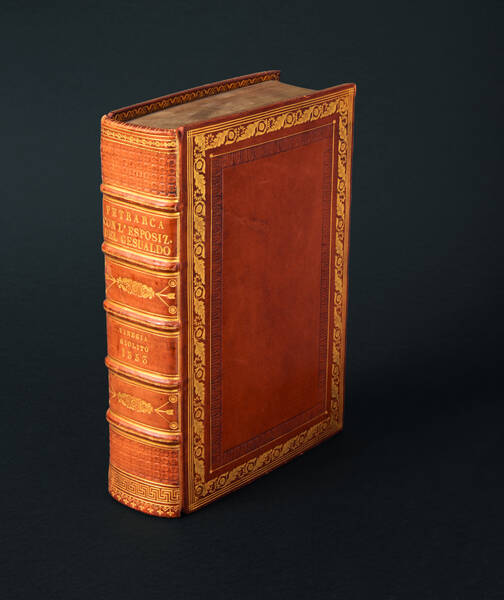
PETRARCA, Francesco
Il Petrarcha con l'espositione di m. Giouanni Andrea Gesualdo, nuouamente ristampato, e con somma diligenza corretto, con nuoua tauola di tutte le...
€ 6.000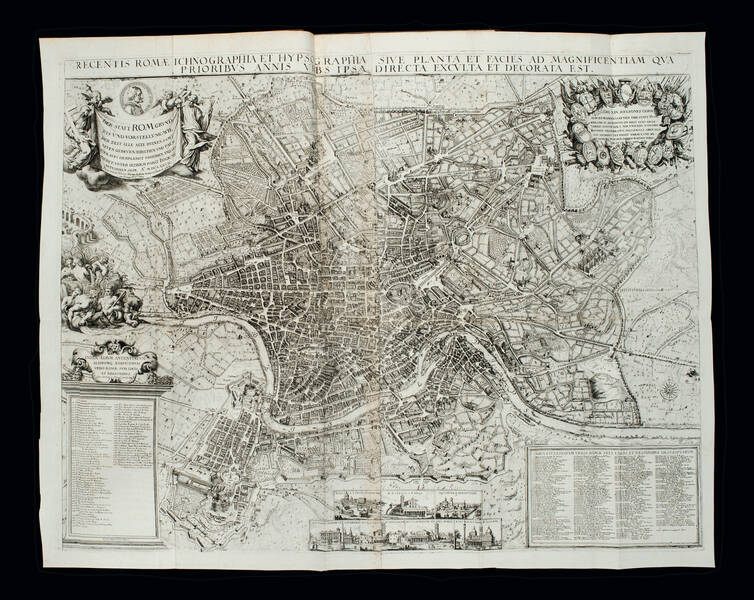
SANDRART, Joachim von
Romae antiquæ et novæ theatrum; sive, genuina ac vera urbis, juxta varios ejusdem status, delineatio topographica.
SOLD OUT![Trattato della natura de’ cibi et del bere [...] nel quale non solo tutte le virtù, & i vitij di quelli minutamente si palesano; ma anco i rimedij per correggere i loro difetti copiosamente s’insegnano. Trattato della natura de’ cibi et del bere [...] nel quale non solo tutte le virtù, & i vitij di quelli minutamente si palesano; ma anco i rimedij per correggere i loro difetti copiosamente s’insegnano.](https://www.medariquier.com/typo3temp/pics/d4e0248596.jpeg)
PISANELLI, Baldassarre
Trattato della natura de’ cibi et del bere [...] nel quale non solo tutte le virtù, & i vitij di quelli minutamente si palesano; ma anco i rimedij...
€ 9.500MEDA RIQUIER rare books ltd.
4 Bury Street St James's
SW1Y 6AB London
Phone +44 (0) 7770457377
info@medariquier.com
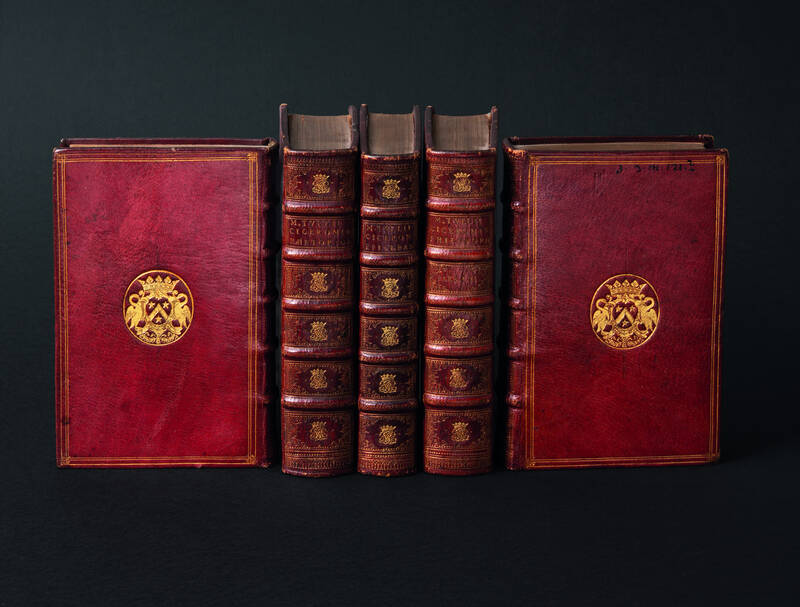
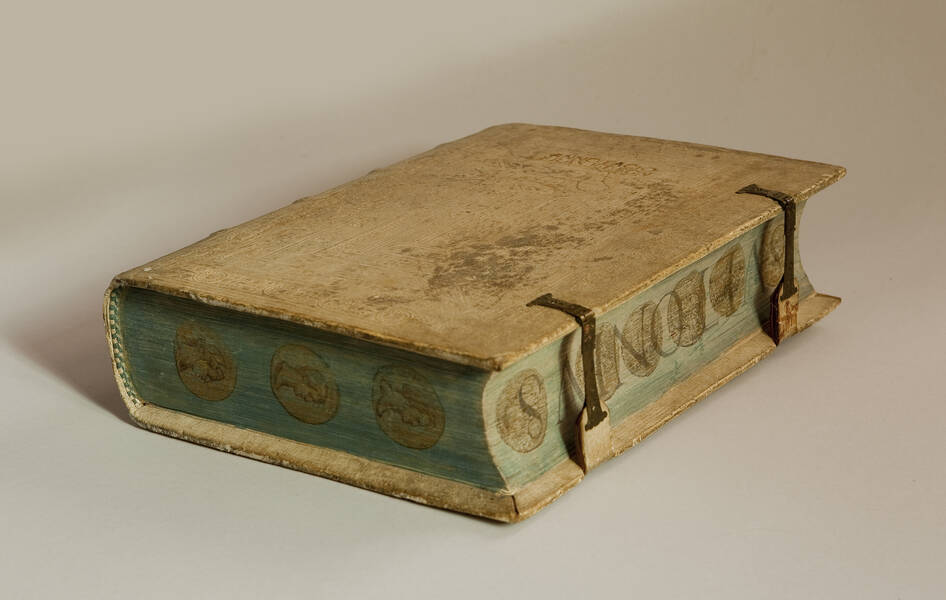
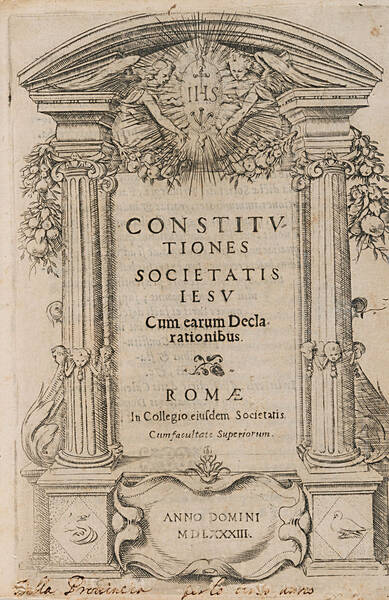
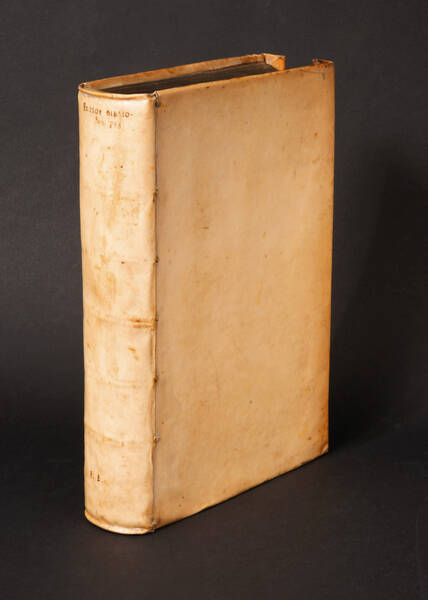
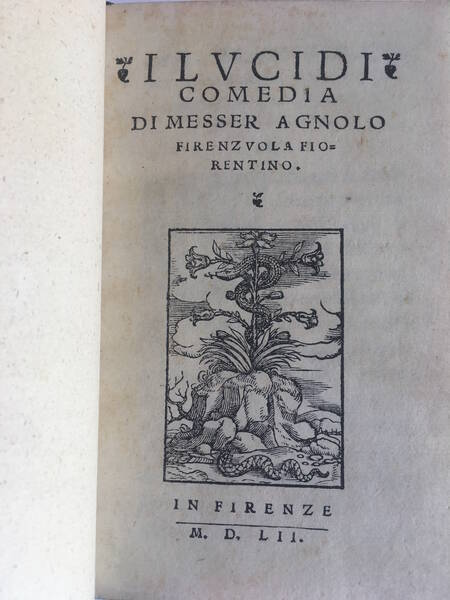
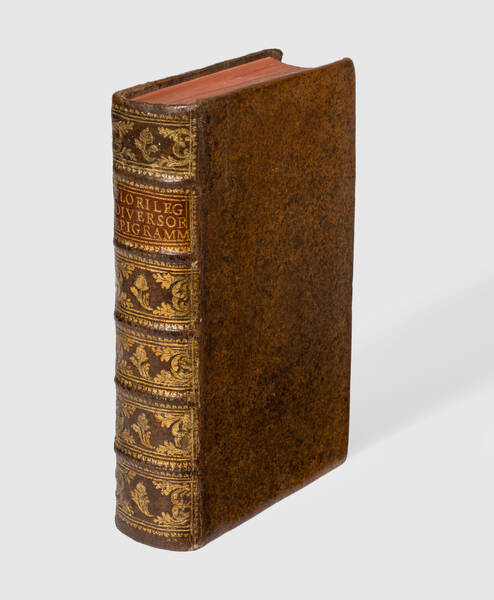
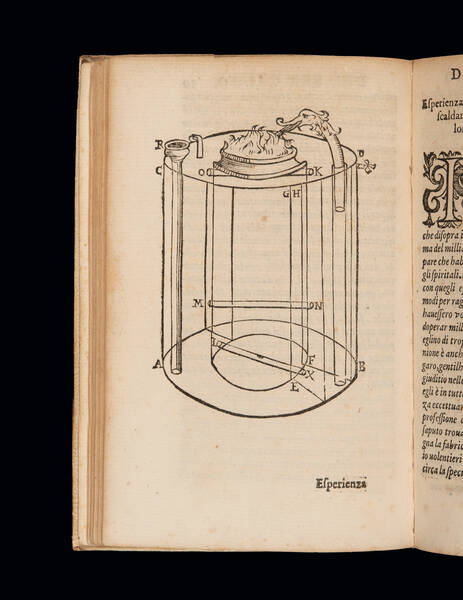
![Opera posthuma [Compendium grammatices linguae hebraeae]. Opera posthuma [Compendium grammatices linguae hebraeae].](https://www.medariquier.com/typo3temp/pics/9e46dbc214.jpg)
